WHAT ARE SUPER LICE?
Not so super after all! “Super lice” are head lice that have developed resistance to the pesticides in traditional over-the-counter head lice treatment products. It is a term coined by the media in 2015 after published research showed head lice were developing resistance to the pesticides used in over-the-counter lice treatments.
WHAT'S THE BEST LICE TREATMENT FOR GETTING RID OF SUPER LICE?
Research
Expanded research published in 2016 showed that lice from each of the 48 states sampled carried the pesticide-resistant genes. Southern Illinois biologist Dr. Kyong Yoon has been researching lice with Dr. John Marshall Clark at the University of Massachusetts at Amherst for 15 years. Over that period, lice have become more and more resistant to pyrethroid products. Studies from 1995 indicated that permethrin was at least 96 percent effective, but recent reports show efficacy rates dropping to as low as 28 percent.
Prevalence
If you have or your children are infested with head lice, there is a high chance that those lice will be resistant to over-the-counter products.
Super lice are not found exclusively in the U.S., since lice in other countries have evolved a resistance to the pyrethroids and to other types of pesticides as well. This just means that lice are resistant to one type of treatment: those containing pesticides. “Super Lice” is a misleading term because it conjures images of monstrous pests that can’t be killed by anything.
The Cure
The reality is that combing and nitpicking can still be effective, although they are incredibly time-consuming and tedious. The fastest, most effective lice treatment is the AirAllé® medical device, which kills lice and eggs (nits) through dehydration using precision-controlled heated air.
There is no evidence to support that lice can evolve resistance to dehydration by heated air (which is how AirAllé kills lice) or to manual removal.
Lice Clinics of America Medical Reference | Reviewed by Dr. Krista Lauer on September 20, 2019
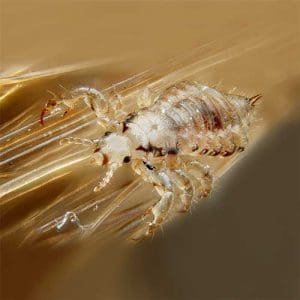
What are head lice?
Head lice are tiny insects that live on the scalp. They do not live on pets or other animals. A louse (the singular form of lice) has six legs, each with a curved claw that can tightly hold onto hair. Head lice crawl easily between hairs, but they cannot fly or jump.
Head lice feed on human blood only. A louse does not dig or burrow into the skin–it uses its needle-like mouthparts to suck blood through the skin.
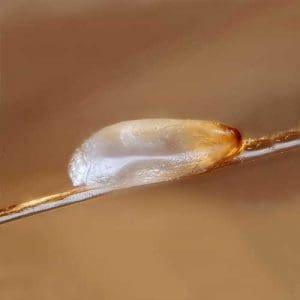
What are nits?
Nits are lice eggs. Academics often distinguish a nit as an empty eggshell attached to the hair, but most people think of nits as viable eggs that will hatch into lice. Nits look like tiny yellow, tan, or brown dots before they hatch. Lice lay nits on hair shafts close to the scalp, where the temperature is perfect for keeping warm until they hatch. Nits look sort of like dandruff, only they can’t be removed by brushing or shaking them off.
Although nits are much smaller than lice, they are often easier to spot on the head because they are “glued” to the hair and can’t crawl away. Lice eggs typically hatch 7-10 days after they’re laid. After hatching, the remaining shell looks white or clear and stays firmly attached to the hair shaft.
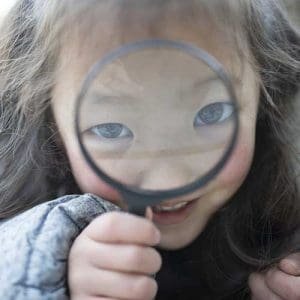
How to identify them?
You may be able to see the head lice or nits by parting your child’s hair into small sections and checking for head lice and nits with a fine-tooth comb on the scalp, behind the ears, and around the nape of the neck (it’s rare for them to be found on eyelashes or eyebrows).
A magnifying glass and bright light may help. But it can be tough to find a nymph or adult louse — often, there aren’t many of them and they move fast. When in doubt, schedule an appointment at one of our head lice removal salons for a professional head lice screening. Be sure to check with your child’s school nurse or childcare center director to see if other children have recently been treated for lice. If you discover that your child does have head lice or nits, contact the staff at the school and childcare center to let them know. Find out what their return policy is. Many schools have a “No Nit” policy and will not let children return to school if they have nits in their hair. Our Signature AirAllé Treatment works in as little as one hour, getting rid of lice and nits fast and allowing your child a swift return to school.
SUPER LICE IN THE NEWS
WHAT IS THE LIFE CYCLE OF LICE?
Head lice live on your head as either lice eggs (nits) or hatched lice (the lice that crawl through your hair). Hatched lice can be either adult lice or nymphs (baby lice).
The adult louse is no bigger than a sesame seed and is grayish-white or tan. Nymphs are smaller and become adult lice roughly 10 days after they hatch.
Lice feed on blood from your scalp several times a day. Although some lice have been observed living up to 2 days off the scalp, most lice die within 15 hours of coming off the head. Head lice only live for about three weeks. An adult female louse will lay four to eight eggs each day. She attaches each egg with a cement-like material that does not wash out.
The eggs do not grow, move or cause any health problems. Once fully developed, the nymph breaks out of the egg, crawls onto the hair, and leaves behind the now-empty eggshell. The empty eggshell will never produce another louse, but it will remain glued to the hair until it is broken or cut off.
The nymph will grow in size and shed its skin every few days until it has matured to become an adult. Only adult females can lay eggs.
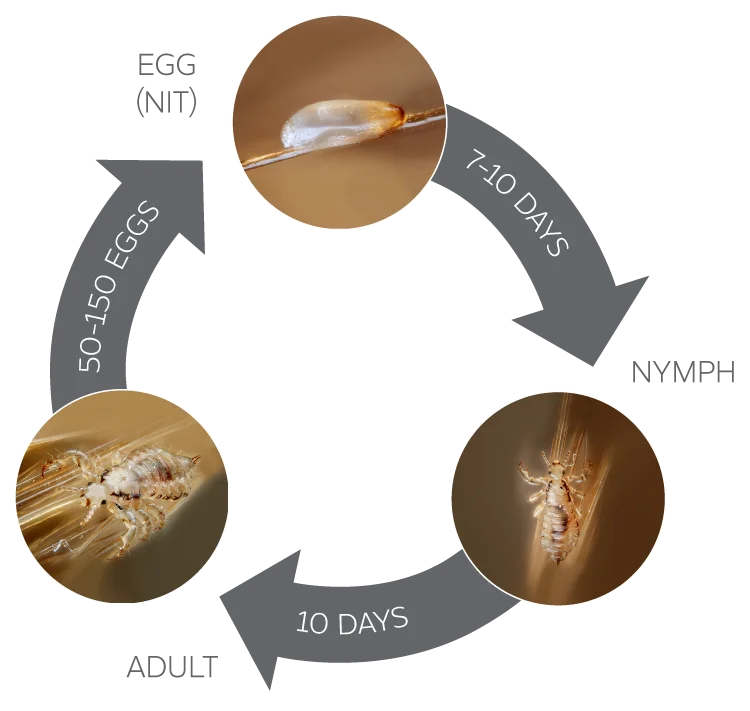
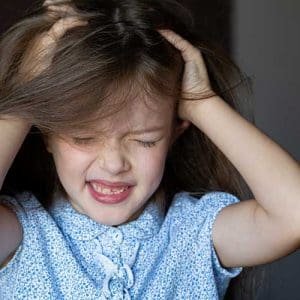
What are the symptoms of head lice?
They may complain, though, of things moving around on or tickling their heads. You may also notice small red bumps or sores from scratching. For some children, the irritation is mild; for others, a more bothersome rash may develop. Excessive scratching can lead to a bacterial infection (this can cause swollen lymph glands and red, tender skin that might have crusting and oozing). If your doctor thinks this is the case, he or she may treat the infection with an oral antibiotic.

How do people get head lice?
Head lice are almost always caught directly from another person, usually children. This typically happens when people are in head-to-head contact, such as when they share a bed or play together in close proximity. Louse eggs cannot move and are not transmissible. Head lice are rarely transmitted via a shared comb or hat, but transmission via shared baseball helmets is common.
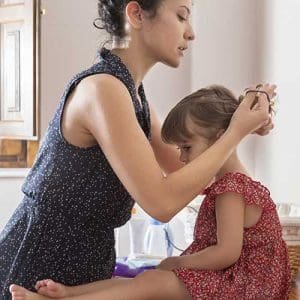
How to prevent re-infestation?
Keeping your head away from other heads is your best chance at not getting infested. If you have long hair, putting it in a bun or braid will help. Not sharing hats, helmets, or within close sleeping quarters with infested individuals will also help.
Because 50 percent of the time people get infested by other family members, make sure everyone in your family gets checked (and if necessary, treated) when any family member has head lice. If head lice treatment is necessary, schedule an appointment at one of our lice treatment clinics, where we have successfully treated over 800,000 cases of head lice.
We also offer a line of head lice prevention products like spray, shampoo, and conditioner that contain essential oils that attack a louse’s olfactory nerves. So the products will smell pleasant to humans, but not to lice.
Do I have to clean the whole house?
No. Head lice that fall off a person quickly starve and usually die within 15 hours (and most become incapable of feeding between 3-18 hours off a host). So head lice that fall on a desk, floor, or coat at school will not be alive the next day. Any eggs that may come off of a head will not survive.
Clothing, stuffed animals, theater seats, and other items are not threats to spreading head lice. Bathing every day will not prevent or wash away head lice. Cleaning the home or bagging toys and clothing won’t help you prevent or get rid of head lice.
That said, washing clothes or bedding of infested individuals is not a bad idea. When doing so, make sure to wash them in hot water at 130° F (54.4° C), then put them in the hot cycle of the dryer for at least 20 minutes.

